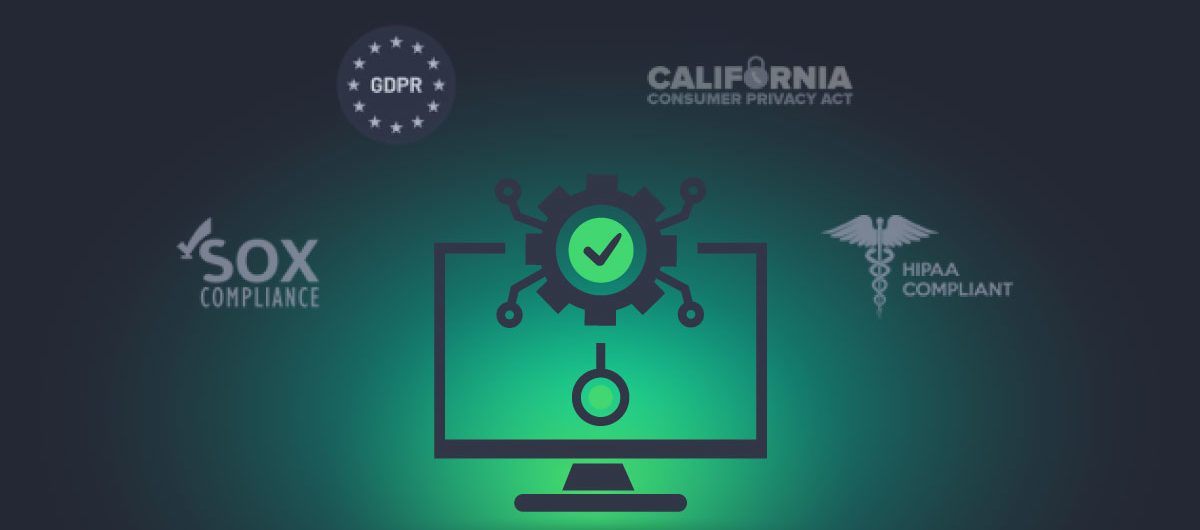What is Continuous Compliance Automation (CCA)?
There is a growing emphasis on database compliance today due to the stricter enforcement of compliance rules and regulations to safeguard user privacy. For example, GDPR fines can reach £17.5 million or 4% of annual global turnover (the higher of the two applies). Besides the direct monetary implications, companies also need to prioritize compliance to protect their brand reputation and achieve growth.
Traditional database compliance processes involve manual audits, ongoing monitoring of roles, and active enforcement of corporate policies. But with today’s dynamic nature of DevOps pipelines, with dozens or hundreds of stakeholders scattered in multiple locations, the manual approach to compliance is not effective anymore. Another huge pain point is the surfacing of human errors and issues that “slip between the cracks”.
Continuous Database Compliance Automation allows you to smoothly implement compliance and security measures into your DevOps delivery pipeline. Through advanced automation, CCA continuously runs checks of all changes and commitments against security standards. CCA brings a number of benefits and is considered a best practice for the software development process.
- Great ROI
Compliance automation reduces costs of non-compliance that, according to the research by Globalscale Technologies, significantly exceed the costs of CCA. The research states that the average compliance cost lies between $0.58 and $21.56 million, whereas the non-compliance expenses add up to $2.20 – $39.22 million. Manual labor reduction, when it comes to complying with regulations together with increasing consistency, leads to a noticeable drop in expenses.
- Prevent Errors
Besides keeping expenses within the predetermined budget, businesses can also minimize costly human errors with CCA. Manual compliance procedures tend to cause errors during data collection, transfer, and analysis. Automation eliminates the need to manually gather and process data which guarantees more accurate and precise results. This in turn enables smoother and faster audits, both internal and external ones, since everything is documented automatically.
- Increase Transparency
Compliance automation includes an ongoing cycle of assessment. If a problem occurs, the CCA tool will alert the team in real-time. Analysts can then determine the policy deviation and resolve the issue. You no longer have to wait for the next scheduled audit to learn about the system’s failures and inconsistencies. Get notified in real-time with CCA for enforcing the highest standards possible at all times.
Besides the aforementioned benefits, Continuous Security Compliance during the entire development cycle is one of the pillars of CI/CD approach. CCA compliments and strengthens the DevOps procedures and accelerates the process of development and deployment, allowing faster time-to-market (TTM) without dropping security standards or quality levels. This is now becoming mandatory.
Lack of Database Compliance Automation – The Main Problems
Much like everything in the tech world, databases can also be exposed to security threats, cyberattacks, and data breaches. Despite the security protection that database vendors offer to their users, databases can still be vulnerable to cyberattacks. What issues can arise from security threats in the database when you are performing all tasks manually without any automation?
Governance in the database is about granting permissions and making sure that only authorized stakeholders get direct access. Controlling permissions allows DBAs to separate duties and specify what can be changed. Without enforced compliance automation that autonomously tracks and controls the access granting, your data might be exposed to unauthorized personnel – a serious data breach or leak risk.
Detailed and comprehensive documentation of changes will simplify the detection of issues as well as guarantee smooth audits. But adding and tracking each and every change manually is a lot of work that is also prone to human errors. CCA tools make sure that every modification finds its way into a common repository where changes and attempts are documented with complete user information.
Databases often require a variety of different policies and regulations which makes the enforcement difficult and lengthy. GDPR and HIPAA are just a few of the most common policies that companies need to adhere to. CCA tools monitor the adherence to external requirements and keep your database secure. Through ongoing monitoring, DBAs can always stay on top of things.
5 Essential Pillars of Compliance Automation
Database Compliance automation consists of 5 main essential building blocks.
Release automation allows for error-free frequent deployment. By eliminating bottlenecks and inconsistencies that occur in the database, you reduce the downtime of your application and improve user experience. Top database compliance automation tools provide visual database pipeline builders that allow you to monitor the entire process, including verification, packaging, and deployment.
These tools give you an opportunity to trial-run (dry-run) the release before the production phase to identify possible errors. Fixing bugs in the earlier stage is easier and cheaper and prevents you from developing deeper and more complex issues. Compliance automation tools are programmed to recognize configuration drifts and also challenges that can lead to serious problems after the release.
Source control preserves and tracks historical data about every database change. By keeping everything in one shared document that is automatically synchronized across all users, you end up with a consistent structure and stability. The source control, or version control, checks database modifications against standardized schemas to make sure that changes are in compliance with requirements.
The unified repository with information about who made the change, which changes took place, and why gives you a single structured trusted overview. You can also prevent unauthorized changes that go against the prescribed and documented requirements and standards. Version control management implementation results in a 15% increase in productivity and accelerates time to market by 10 times.
Compliance is not only about rules and policies but also about roles and permissions. CCA enables correct and smooth permission management best practices such as the “least privilege” philosophy. Adequate permission management reduces risks of data breaches and exposure by granting only that much access to each worker that is necessary to complete their tasks.
Giving too many permissions confuses the process and often leads to confusing documentation and poor structure. A compliance automation tool will allow you to change the setting for roles and permissions with a couple of clicks. This functionality is extremely crucial with professionals working from home and from multiple locations globally. Doing this manually is simply impossible today.
Single source of truth goes back to source control that preserves all the data about changes to databases. A unified repository with shared data about every entry, modification, and deletion allows for quicker report building. This capability is extremely important while working on compliance audits and improving the overall security posture of the organization.
When you have one repository with relevant data, gathering information for reports gets much simpler and faster. You can also be sure that the information is accurate and exhaustive because of its automatic synchronization across devices and users. Not only are you gaining speed, but you are essentially eliminating all chances of mix ups or human errors.
The final pillar of compliance automation elements is enforcing and adhering to rules and policies. These regulations can be external such as GDPR, SOX, and HIPAA. They can also be internal to correspond with your company’s standards. It’s also important to keep in mind that these privacy regulations are constantly changing, something that CCA helps organizations with.
Compliance automation tools offer features that record the information about policies and regulations and make sure the company stays compliant at all times, even after massive changes and revisions in the aforementioned regulations. Instead of doing regular check-ups, you have a tool that continuously does it for you and notifies you when issues arise.
Database Compliance Automation: Optimizing DevOps
DevOps teams today must adhere to strict compliance, governance, and security requirements while creating a leaner operating environment. CCA tools enable them to achieve both of these key goals. They help bolster value stream delivery, while also mitigating risks created by traditional manual processes. They also promote a Shift-Left approach, which is another DevOps essential.
Scaling up by embedding database compliance automation into your pipeline can help you address all regulatory obligations, while also elevating quality and TTM.





